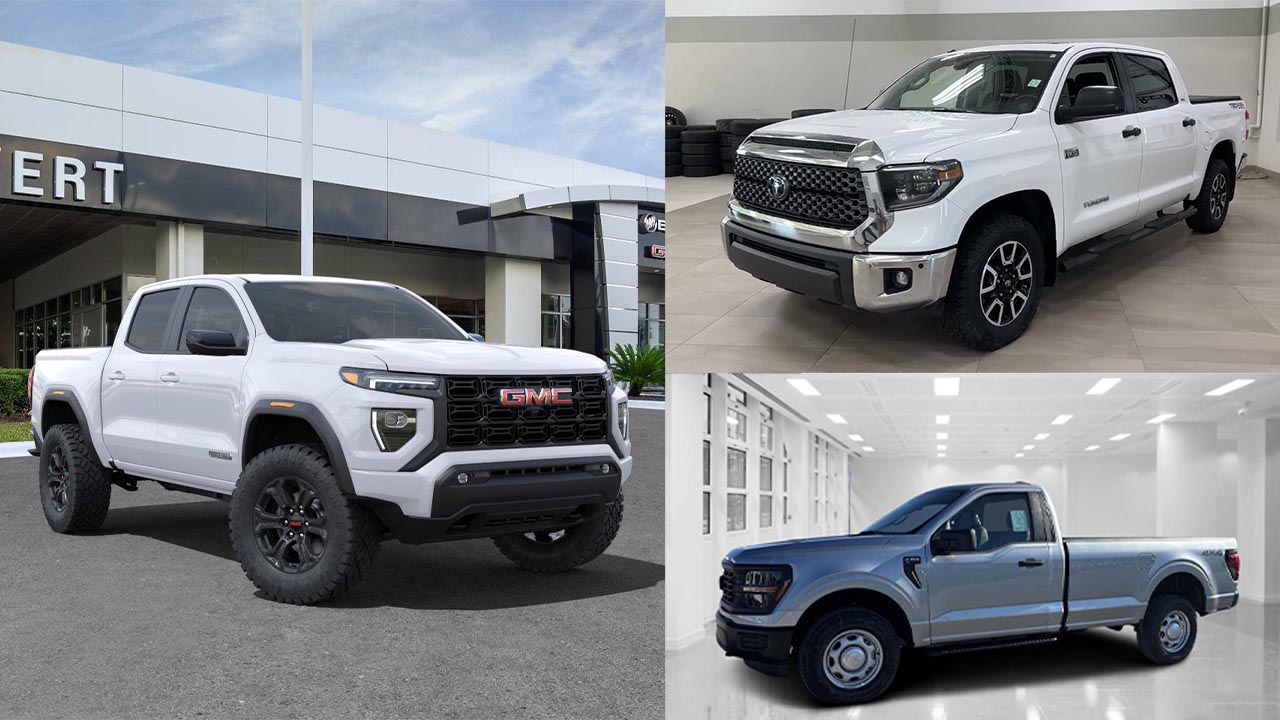Trucks are primarily marketed based on their capabilities rather than the amount of money required to operate them during those tasks.
And that doesn’t just refer to expenses like gas-station coffees or fast food fuel is by far the costliest item consumed in or around a truck.
While hybrid systems have become common on many truck models, they’re typically designed to enhance torque and deliver extra power when needed, not necessarily to reduce your fuel expenses.
Whether you’re looking at fully gas-powered or partially electrified models, nearly all of the top gas mileage trucks earn their titles in a relatively narrow margin.
One notable exception is the most fuel-efficient truck currently available, which features a Toyota-sourced hybrid system that nearly doubles the mpg of the lowest-ranked trucks.
Fuel-Efficient Pickup Trucks
Still, it’s now fairly easy to find a truck that achieves well over 20 mpg combined, and we’ve simplified that search further with a convenient list ranked by EPA combined mpg ratings which combine city and highway fuel economy for a more complete picture covering compact, midsize, and full-size trucks.
5. 2025 Chevrolet Silverado 2WD 2.7L – 20 MPG
The 2025 Chevrolet Silverado offers a diverse selection of powertrain options, with the lineup starting at the 2.7-liter turbocharged four-cylinder engine known as the TurboMax.
Despite its smaller size, this engine delivers an impressive 310 horsepower and 420 lb-ft of torque while maintaining a combined fuel economy of 20 mpg.
As one of the most affordable engines in the Silverado’s lineup, it allows buyers to save money both upfront and over time at the gas pump something not all high-mpg trucks can claim.
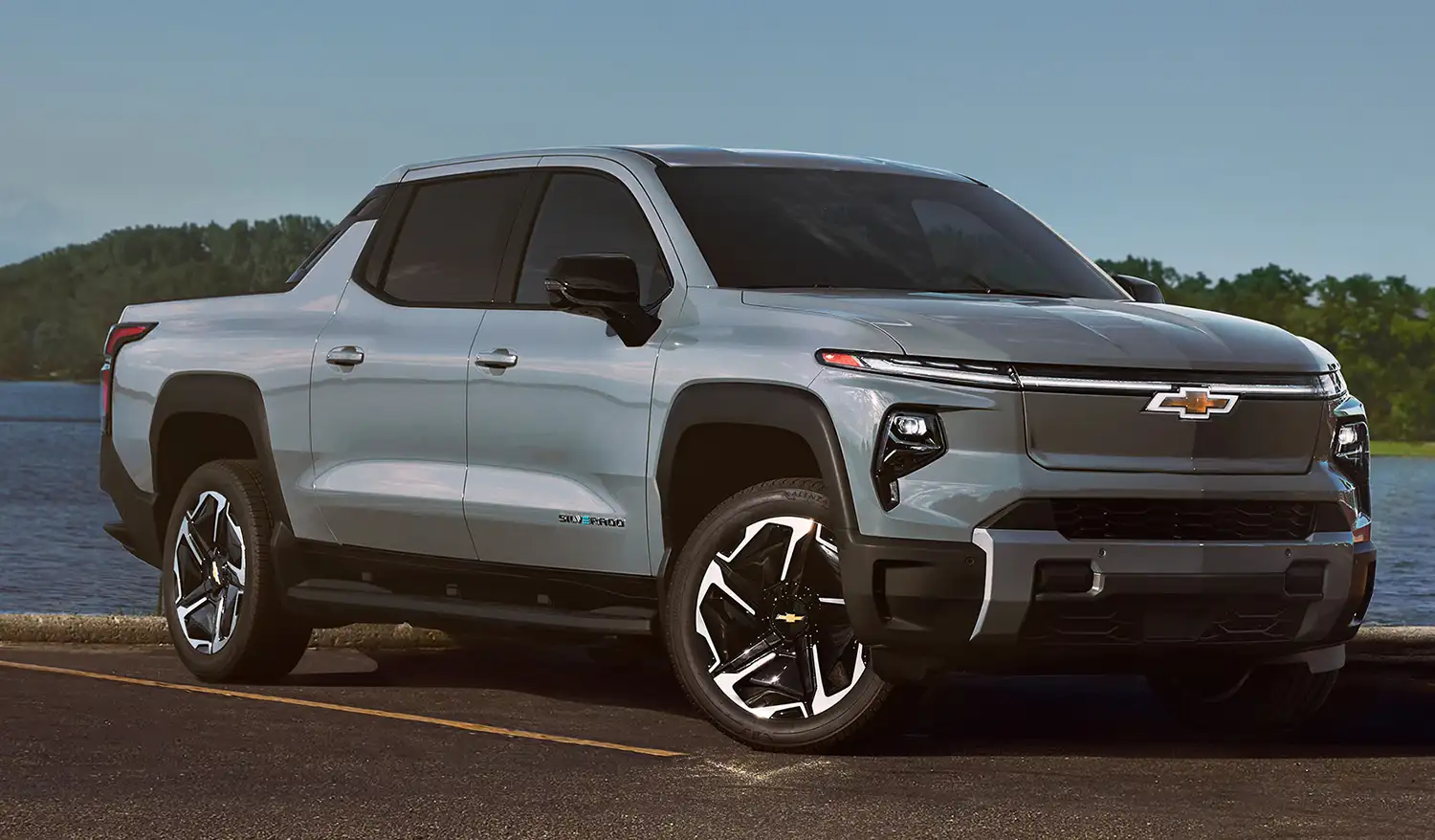
Though its front-end styling may not be to everyone’s taste, the Silverado’s turbocharged engine offers a compelling blend of power and efficiency.
The Silverado’s strengths lie in its stout engine and wide array of modern technology features. However, it does have a few drawbacks, including polarizing styling, simpler interiors on the lower trims, and less refined ride quality in some versions.
Starting at a base MSRP of $38,795, the truck comes equipped with a 2.7-liter turbo inline-four engine that produces 310 horsepower and 420 lb-ft of torque. According to EPA estimates, it achieves 18 mpg in the city, 22 mpg on the highway, and 20 mpg combined.
Also Read: Top 10 Budget-Friendly & Luxury Trucks You Can Buy
4. 2025 GMC Canyon 2WD – 20 MPG
The 2025 GMC Canyon stands out by blending the best attributes in GMC’s truck lineup.
It takes the most powerful turbocharged engine available in the Chevrolet Colorado, adds a bold and boxy exterior design, and incorporates a cabin loaded with useful technology highlighted by an intuitive infotainment display.
In addition to its stylish presence, the Canyon offers solid performance through its range of bed sizes and configurations, making it a versatile midsize option.
Under the hood, the Canyon features a 2.7-liter turbocharged inline-four engine, similar to the Silverado’s, delivering 310 horsepower and 430 lb-ft of torque.
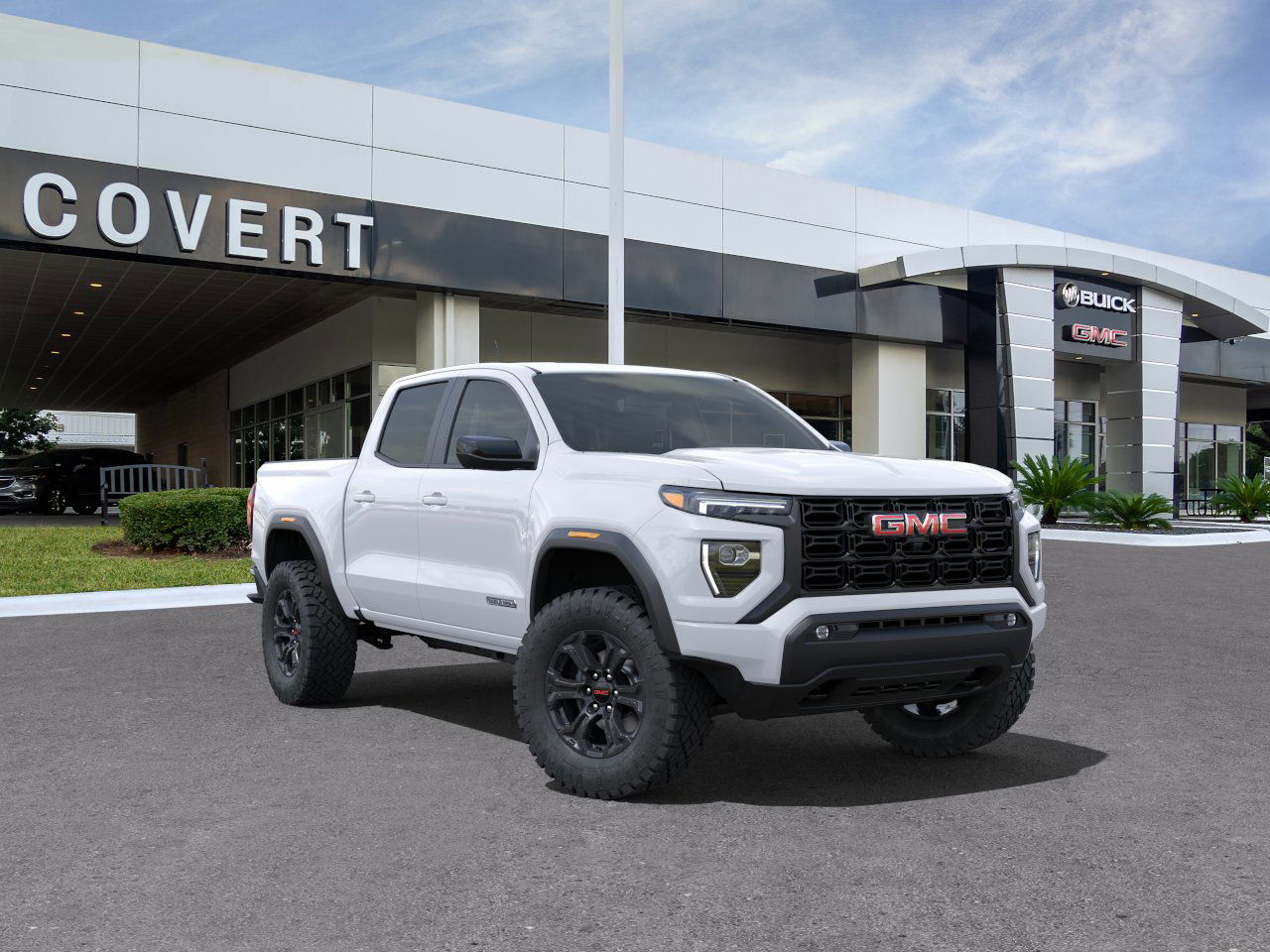
Not only does it provide strong acceleration, but it’s also efficient, earning an EPA-estimated 20 mpg combined. Its higher highway mpg gives it a slight edge over the larger Silverado, despite having the same combined figure.
The Canyon emerges as one of the most well-rounded midsize trucks available, though it falls just short of claiming the top spot for fuel economy in its class.
Among its advantages are its full-size truck styling, smooth and confident driving feel, and a well-executed infotainment system.
On the downside, it only comes in one bed and cab configuration, has a relatively cramped interior, and features some lower-quality materials in parts of the cabin.
The base MSRP starts at $39,995, and the 2.7-liter turbo I-4 engine delivers 310 horsepower and 430 lb-ft of torque. EPA estimates put its fuel economy at 19 mpg in the city, 23 mpg on the highway, and 20 mpg combined.
The 2025 GMC Canyon 2WD is a mid-size pickup that offers a blend of power, efficiency, and modern features. Equipped with a turbocharged 2.7-liter inline-four engine, it delivers 310 horsepower and 430 lb-ft of torque, providing ample power for various driving needs.
This engine is paired with an 8-speed automatic transmission and rear-wheel drive, contributing to its fuel efficiency. The Canyon 2WD achieves an EPA-estimated 19 MPG in the city, 23 MPG on the highway, and a combined 20 MPG.
In terms of design, the 2025 Canyon features a bold and aggressive exterior, reflecting GMC’s updated styling direction. Inside, it offers a comfortable cabin equipped with modern technology, including an intuitive infotainment system.
Safety features such as active blind-spot monitoring and lane-departure prevention are standard, enhancing driver confidence on the road.
Overall, the 2025 GMC Canyon 2WD stands out as a capable and efficient choice in the mid-size pickup segment, combining power, fuel economy, and advanced features in a well-rounded package.
3. 2025 Nissan Frontier 2WD – 21 MPG
The 2025 Nissan Frontier continues to uphold its legacy as a dependable workhorse, powered by a naturally aspirated V-6 engine.
This engine delivers 310 horsepower and 281 lb-ft of torque, which allows the Frontier to tow over 6,500 pounds and carry payloads exceeding 1,500 pounds.
Like many of its midsize competitors, the Frontier is fully capable of handling tough tasks, but it manages to do so while remaining fuel-efficient, especially considering its conventional powertrain setup.
According to EPA estimates, the Frontier achieves 18 mpg in the city and 24 mpg on the highway, resulting in a combined 21 mpg rating.
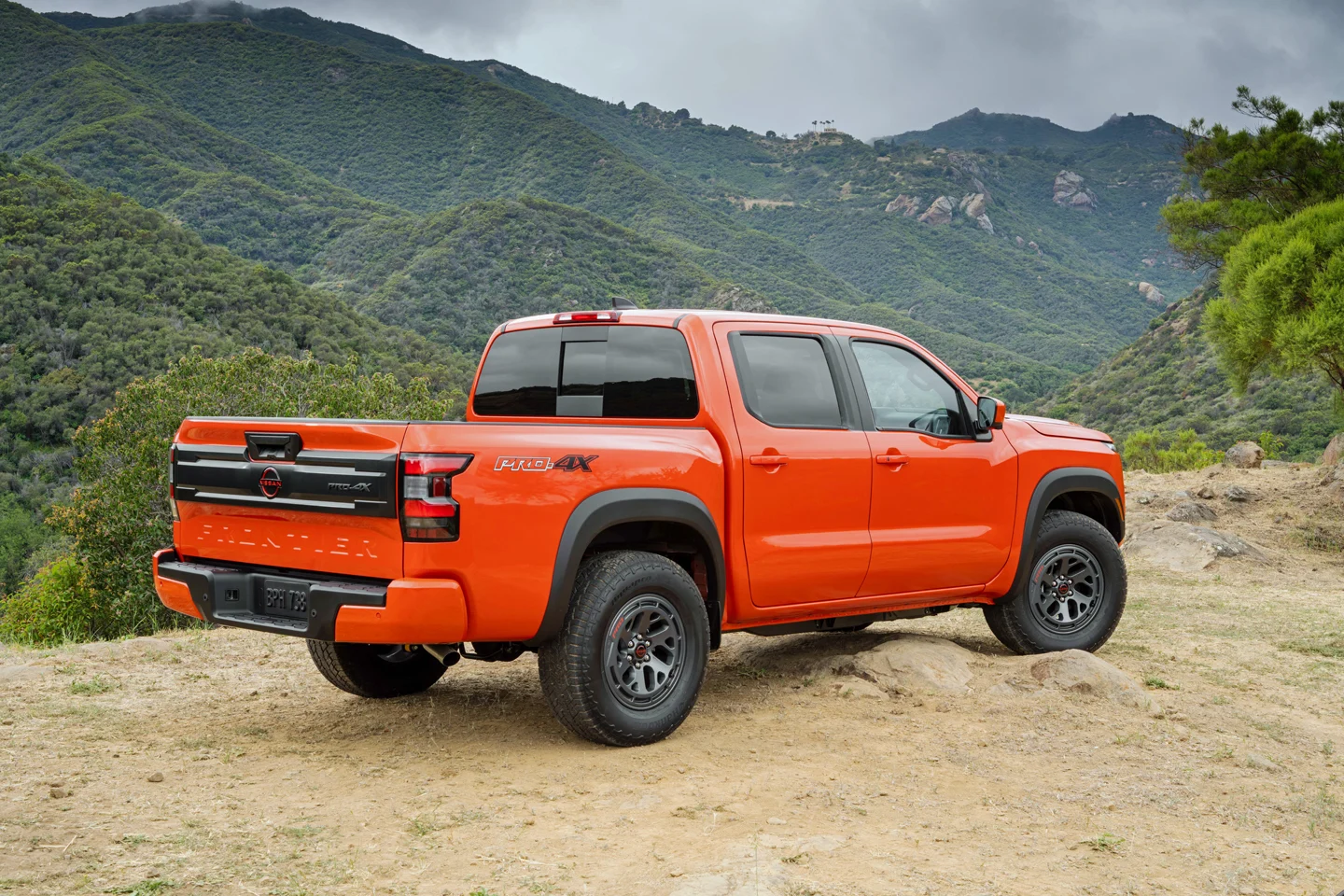
These fuel economy figures remain consistent regardless of the chosen body style, whether it’s the base-level King Cab or the more spacious Crew Cab.
Another advantage is the Frontier’s relatively recent redesign, which has modernized its overall look and feel compared to its much older predecessor.
Among the Frontier’s notable strengths are its rugged styling, the nostalgic Hardbody edition, and its solid towing capability.
On the downside, the driving experience can be underwhelming, it lacks many standard driver assistance features, and in some areas, it still feels dated.
With a base MSRP of $33,560, the truck is powered by a 3.8-liter V-6 engine producing 310 horsepower and 281 lb-ft of torque. The EPA rates its fuel economy at 18 mpg city, 24 mpg highway, and 21 mpg combined.
2. 2025 Honda Ridgeline – 21 MPG
The 2025 Honda Ridgeline continues to stand out as the original modern “anti-truck,” with a fanbase that often prefers its unique characteristics over more traditional options.
While its unconventional unibody design once set it far apart from body-on-frame pickups, the Ridgeline now shares the same combined mpg rating as many midsize trucks.
However, its more truck-like competitors generally offer superior towing and hauling capacity due to their full-frame construction.
Still, the Ridgeline retains its distinct personality, thanks to smart features like a 5-foot bed with in-bed trunk storage, a dual-action tailgate, and multiple creative interior storage solutions.
Powering the Ridgeline is a 3.5-liter V-6 engine, producing 280 horsepower and 262 lb-ft of torque enough to tow up to 5,000 pounds. Despite its solid performance, the V-6 remains efficient, earning a combined EPA rating of 21 mpg.
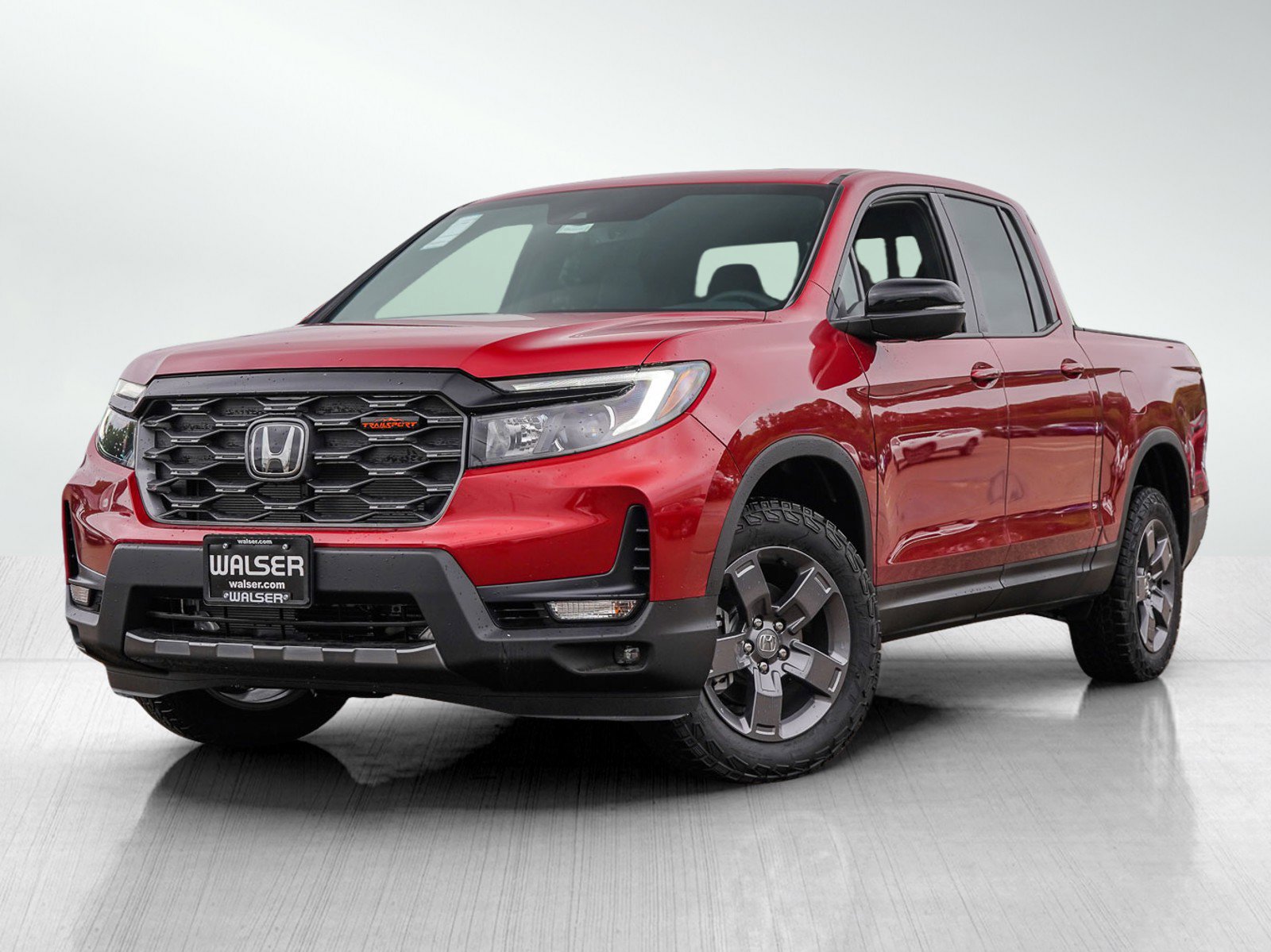
Notably, that figure applies across the lineup, which comes standard with all-wheel drive. It’s worth mentioning that the newly introduced Ridgeline TrailSport variant receives a slightly lower EPA rating of 20 mpg combined due to its more aggressive, off-road-oriented tires.
The Ridgeline shines with its carlike handling, useful tailgate and bed features, and a solid mix of truck utility and daily comfort.
Its drawbacks include a single engine and cab/bed configuration, a less refined ride when fully loaded, and a design that may not appeal to buyers seeking a more rugged, traditional truck feel.
Starting at a base MSRP of $41,545, the Ridgeline is equipped with a 3.5-liter V-6 engine that generates 280 horsepower and 262 lb-ft of torque. The EPA estimates it will return 18 mpg in the city, 24 mpg on the highway, and 21 mpg combined.
1. 2025 Ford F-150 2WD 2.7L – 21 MPG
There’s no denying that the Ford F-150 holds its place as America’s bestselling vehicle, and Ford continues to stick with the formula that has made it so successful.
The F-150 lineup spans a wide array of powertrain options, ranging from traditional gasoline engines to hybrid variants, and even the all-electric Lightning model.
Among these choices, the smallest available engine is a 2.7-liter turbocharged V-6. This efficient yet capable powerplant delivers 325 horsepower and 400 lb-ft of torque, while achieving an EPA-estimated 19 mpg in the city and 25 mpg on the highway.
Those fuel economy figures are especially noteworthy for a full-size pickup, placing the F-150 with this engine configuration among the most fuel-efficient options in its class.
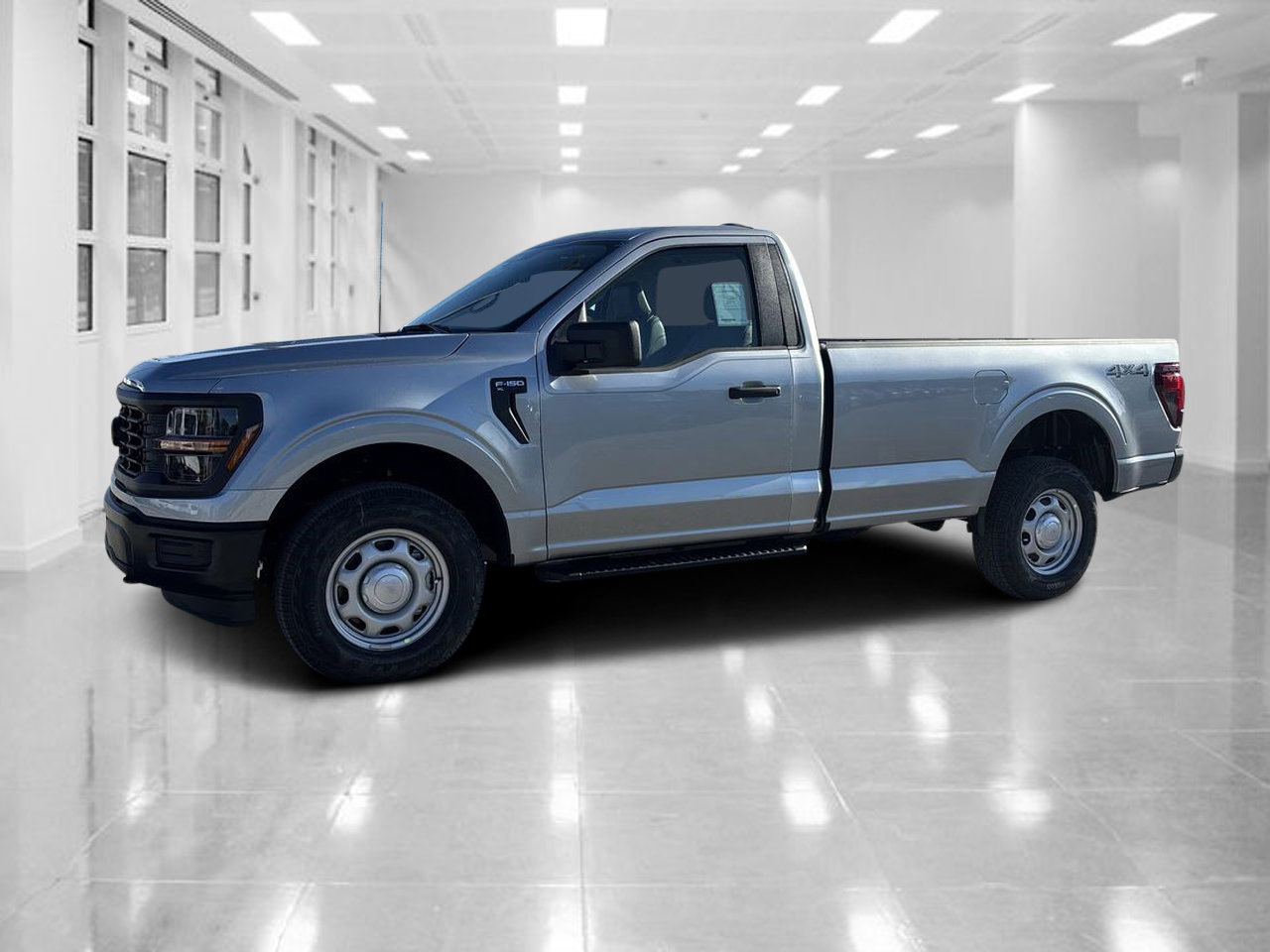
Even more appealing is that the 2.7-liter EcoBoost V-6 is now the standard engine on the F-150, at least for several trim levels, while higher-end models upgrade to more powerful alternatives.
Like the Silverado, this small engine offers a balance of strength and efficiency, making it a smart choice for drivers who want performance without sacrificing mileage.
The 2025 Ford F-150 2WD with the 2.7L engine has a base MSRP of $43,910. Under the hood is a 2.7-liter twin-turbocharged V-6 that produces 325 horsepower and 400 lb-ft of torque.
According to the EPA, it returns 19 mpg in the city, 25 mpg on the highway, and 21 mpg combined impressive numbers for a full-size truck with serious capability.
Pickup Trucks That Burn Fuel Fast
5. 2019 Chevrolet Silverado 1500
The Chevrolet Silverado 1500 has long been a versatile option for a wide variety of buyers, offering everything from basic work trucks to premium, feature-packed trims.
The truck’s range of configurations ensures that it meets the needs of both businesses and individuals looking for a more luxurious ride.
As a result, there’s a significant difference in pricing between the entry-level and high-end models. The starting price for the Silverado 1500 ranges from around $28,300 to $56,600, with the combined fuel economy sitting at 22 MPG.
While official pricing for the latest model hasn’t been confirmed yet, it’s anticipated that the base work-oriented version of the Silverado 1500 will start at roughly $29,000.
On the other end of the spectrum, fully loaded, luxury-trimmed variants may reach into the mid-$60,000 range.
Despite those higher prices, the Silverado still represents solid value. After all, how many vehicles in the $60,000 luxury segment can tow like the Silverado or transport a few ATVs deep into the woods?
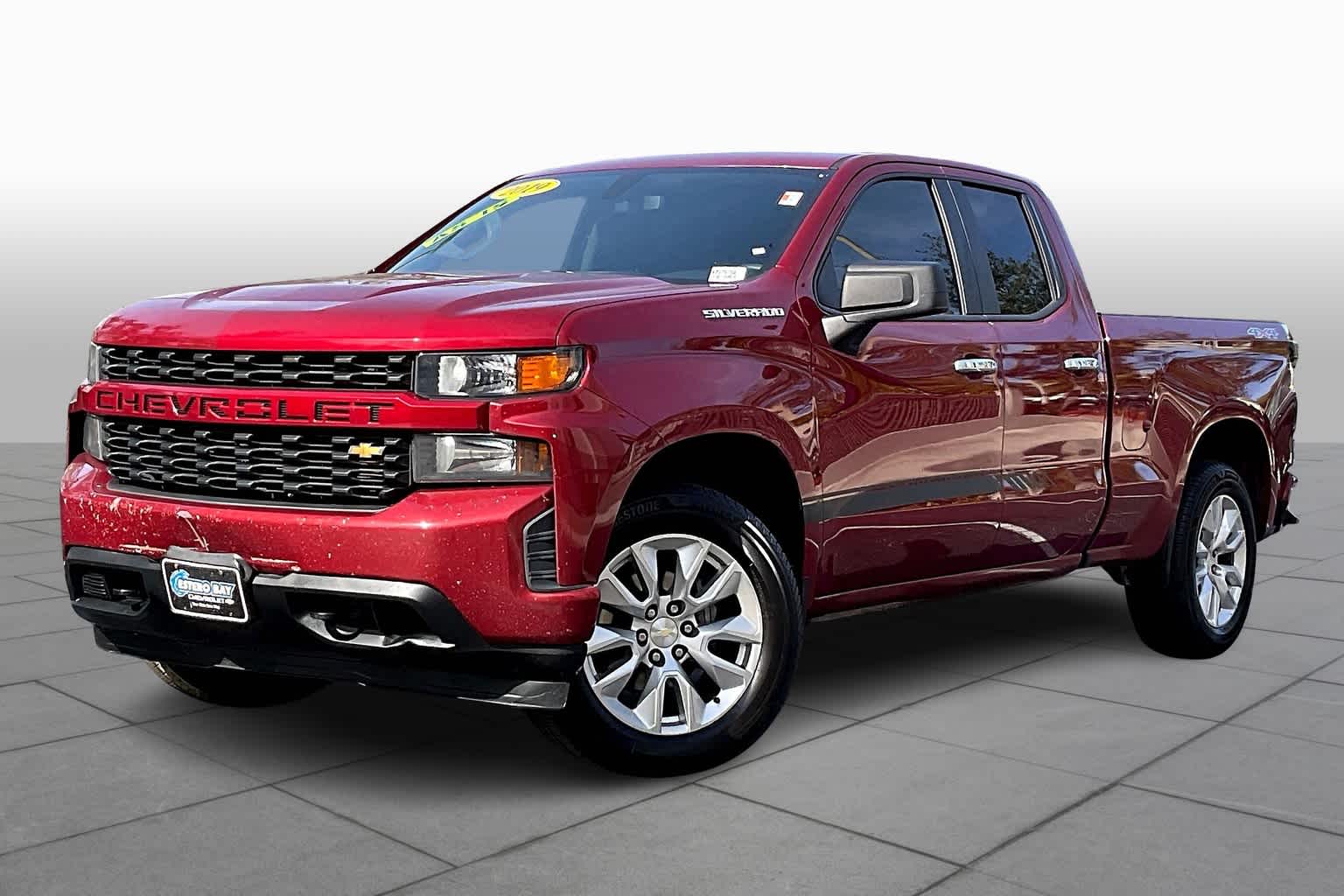
This combination of utility, capability, and upscale options is what continues to make the Silverado 1500 a standout in its class.
The long-awaited debut of General Motors’ all-new Chevrolet Silverado and GMC Sierra has been somewhat underwhelming.
Earlier in the year, the new Ram 1500 pickup arrived and stole much of the spotlight, with its more impressive, higher-quality interiors and a 48-volt hybrid powertrain standard on the V-6 engine and optional with the V-8.
Adding to GM’s challenges, the new Ram also has a more appealing design, featuring side surfacing that reportedly was the goal of Chevrolet’s stylists.
Things didn’t improve when the reviews started coming in, most of which could be described as “lukewarm.”
Our own Aaron Gold found it difficult to spot any significant changes between the new GMC Sierra 1500 Denali and its predecessor. The new Silverado felt more like a major facelift than a full redesign.
Furthermore, GM’s mixed-use materials strategy, which combined aluminum body panels with a steel bed, didn’t generate the same buzz in the industry as Ford’s all-aluminum F-150 had a few years earlier.
Although this new approach shaved up to 450 pounds from the Silverado, which was already considerably lighter than the old steel-bodied Ford, it failed to excite in the same way.
The situation became even worse for GM when both Chevrolet and Ford skipped this year’s Texas Truck Rodeo in October.
This meant that all of the Texas Auto Writers Association’s awards went to the new Ram 1500, despite Chevrolet having used the 2017 Rodeo to unveil the 2019 Silverado. For that year’s Rodeo, this was somewhat comparable to an NFC champion deciding not to participate in the Super Bowl.
With all that context, I took temporary delivery of a 2019 Chevy Silverado 4WD LT Crew Cab pickup for the weekend.
My task was to drive, with my wife, about 145 miles northwest of Metro Detroit to pick up a storm door at a home improvement store and then transport it to our summer cabin, located another 30 miles or so farther.
Just to clarify, I’m not a truck guy. Even a mile and a half north of the Detroit border, our neighborhood’s century-old streets are too narrow for parking such large vehicles, and our 89-year-old driveway is too short and narrow for them.
Unless you’re towing something substantial, I don’t see the advantage of a full-size truck over the midsize options (Ford Ranger, Chevy Colorado, Toyota Tacoma, etc.).
In my view, if you’re towing something like a race car or a large Airstream, you’d likely be better off with a 2500 anyway. All I needed was a truck bed long enough to carry a door, something any midsize truck could easily handle.
Also Read: 11 Foreign Car Brands Building Their Best Vehicles in America
4. 2019 Ram 1500 Classic
The 2019 Ram 1500 Classic is designed to offer maximum value, delivering a lot of truck for a relatively affordable price.
With a starting price ranging from $27,645 to $49,200 and a combined fuel economy of 19 MPG, the Classic focuses on providing a practical, cost-effective option for buyers.
While it doesn’t feature the updated platform or the modern styling seen in the all-new 2019 Ram 1500, the Classic still offers solid technology and performance, built upon a well-proven chassis that has earned a reputation for reliability and durability.
What makes the Ram 1500 Classic stand out is how much capability it provides for the money its starting price of just over $27,000 undercuts the new 2019 Ram 1500 by about $4,000.
Unlike purchasing a used 2018 Dodge Ram 1500, opting for the Ram 1500 Classic means you’ll also receive a full factory warranty, making it a smart and practical alternative for those who want reliability, utility, and affordability all in one package.
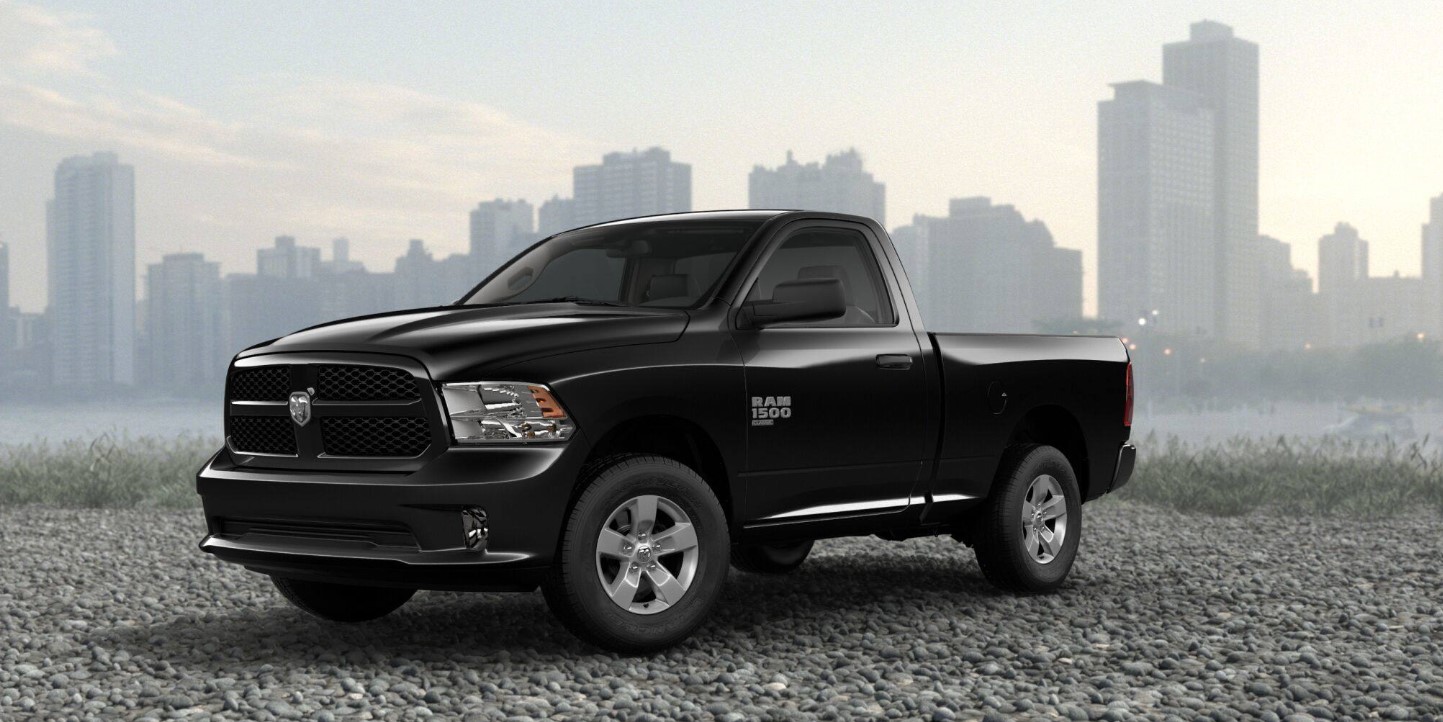
The 2019 model has an MSRP of $27,645 and features a rear-wheel drive drivetrain. Under the hood, it’s equipped with a 3.6L V6 gas engine, paired with an 8-speed automatic transmission. This setup delivers 305 horsepower and 269 lb-ft of torque at 4,175 rpm.
When it comes to fuel economy, the vehicle achieves 17 MPG in the city, 25 MPG on the highway, and a combined 20 MPG. The fuel tank has a capacity of 26 gallons, offering a cruising range of 442 miles in the city and 650 miles on the highway.
The steering system utilizes rack-and-pinion technology with a turning diameter of 39.5 feet. As for its exterior dimensions, the vehicle has a wheelbase of 120 inches, a maximum width of 79.4 inches, a height of 74.6 inches, and a length of 209 inches.
Inside, it can seat up to 3 passengers, with front seat headroom measuring 39.9 inches, shoulder room at 66 inches, hip room at 62.9 inches, and legroom at 41 inches.
For towing and cargo, the vehicle has a maximum towing capacity of 5,020 pounds. The wheels are steel, with front and rear wheel sizes both at 17″ x 7″. The front and rear tires are P265/70SR17.
3. 2019 Ford F-150
The Ford F-150 continues to be one of the most significant and influential vehicles in Ford’s lineup, maintaining its status as one of the company’s top-selling models.
With a starting price ranging from $28,155 to $70,560 and a combined fuel economy of 17 MPG, the F-150 remains highly competitive in the full-size truck segment, where it faces tough competition from rivals such as the Ram, Chevrolet Silverado, and GMC Sierra 1500.
To stay ahead, Ford has poured considerable effort into the 2019 model, ensuring it delivers on innovation and forward-thinking design.
This is evident in the introduction of advanced features not commonly found in this class, such as a 360-degree camera system and integrated loading ramps that are conveniently stowed in the pickup bed. These enhancements reflect Ford’s commitment to keeping the F-150 at the forefront of the truck market.
Additionally, the F-150 offers a smaller, more fuel-efficient EcoBoost engine that enhances fuel economy while still delivering power levels comparable to mid-range V8 engines.
Despite its move toward modern technology and efficiency, the F-150 hasn’t lost sight of its roots.
It continues to shine in core truck capabilities, boasting a best-in-class towing capacity of 12,200 pounds when properly configured, reinforcing its position as a top choice for both work and everyday use.
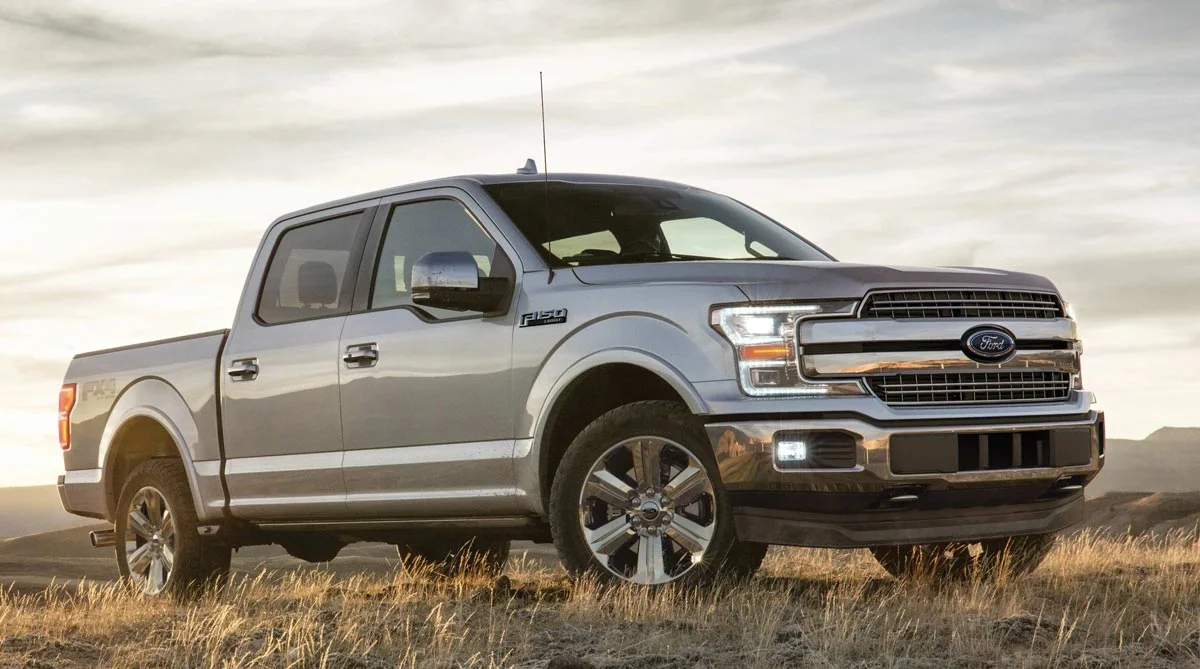
The Ford F-150 offers a wide range of sophisticated engine options, including a 3.0-liter diesel engine that delivers 440 lb-ft of torque.
Most of the available engines are paired with Ford’s 10-speed automatic transmission. Surprisingly, the most powerful engine isn’t a traditional V-8 but a robust twin-turbo V-6, which can tow an impressive 13,200 pounds, setting a class-leading standard.
Even without the Trailer Tow package, an F-150 equipped with either the V-8 or the high-performance V-6 can tow up to 7,000 pounds. The King Ranch model we tested, equipped with the 375-hp V-6, excelled in all categories when compared to competitors’ largest V-8 engines.
Although the V-8 F-150 took 6.3 seconds to reach 60 mph, its 50-to-70-mph time was nearly identical to the V-6’s performance. The V-6 model’s 10-speed automatic transmission, while generally smooth, was occasionally slow to respond under hard acceleration.
Although the F-150 performs well on smoother surfaces, it does not match the Ram 1500’s air-spring suspension in terms of comfort. On rougher roads, the F-150 can feel jittery, particularly in the rear.
When it comes to fuel economy, the F-150 offers two twin-turbo V-6 engines designed to provide V-8-level power while maintaining better fuel efficiency. The 375-hp V-6 model achieved 19 mpg in our real-world highway fuel-economy test, which is 4 mpg less than its official EPA estimate.
Inside, the F-150 offers a spacious cabin with features that make it feel more like a luxury vehicle than a traditional truck.
The roomy back seat and available heated and cooled massaging front seats enhance comfort, while optional Wi-Fi connectivity adds to its modern appeal. However, the infotainment system is slow to respond, which detracts from the otherwise user-friendly design.
The F-150’s interior is equipped with a variety of storage options, making it clear that while it’s a luxury vehicle, it still retains all the practical space expected of a full-size pickup.
The optional touchscreen infotainment system has sharp graphics and is easy to navigate, though its delayed reaction to user inputs is a minor drawback.
2. 2019 Chevrolet Colorado
The Chevrolet Colorado is categorized as a “mid-sized” pickup truck, though it is actually the smallest pickup in General Motors’ lineup, positioned below both the Silverado and Silverado HD.
Despite its more compact size, the Colorado provides versatility through a variety of cab and bed configurations, allowing it to adapt its cargo-hauling capabilities based on the chosen trim and available options.
With a starting price range of $21,300 to $42,900 and a combined fuel economy of 14 MPG, the Colorado remains a practical choice for those seeking a smaller, yet flexible, pickup option.
With a starting price just under $21,000, the Chevrolet Colorado competes directly with other compact trucks like the Toyota Tacoma and Nissan Frontier.
It strikes a balance between utility and urban usability, making it a practical choice for those who need a capable hauler but also want the ease of maneuvering and parking in city environments without significant concerns about size or space.
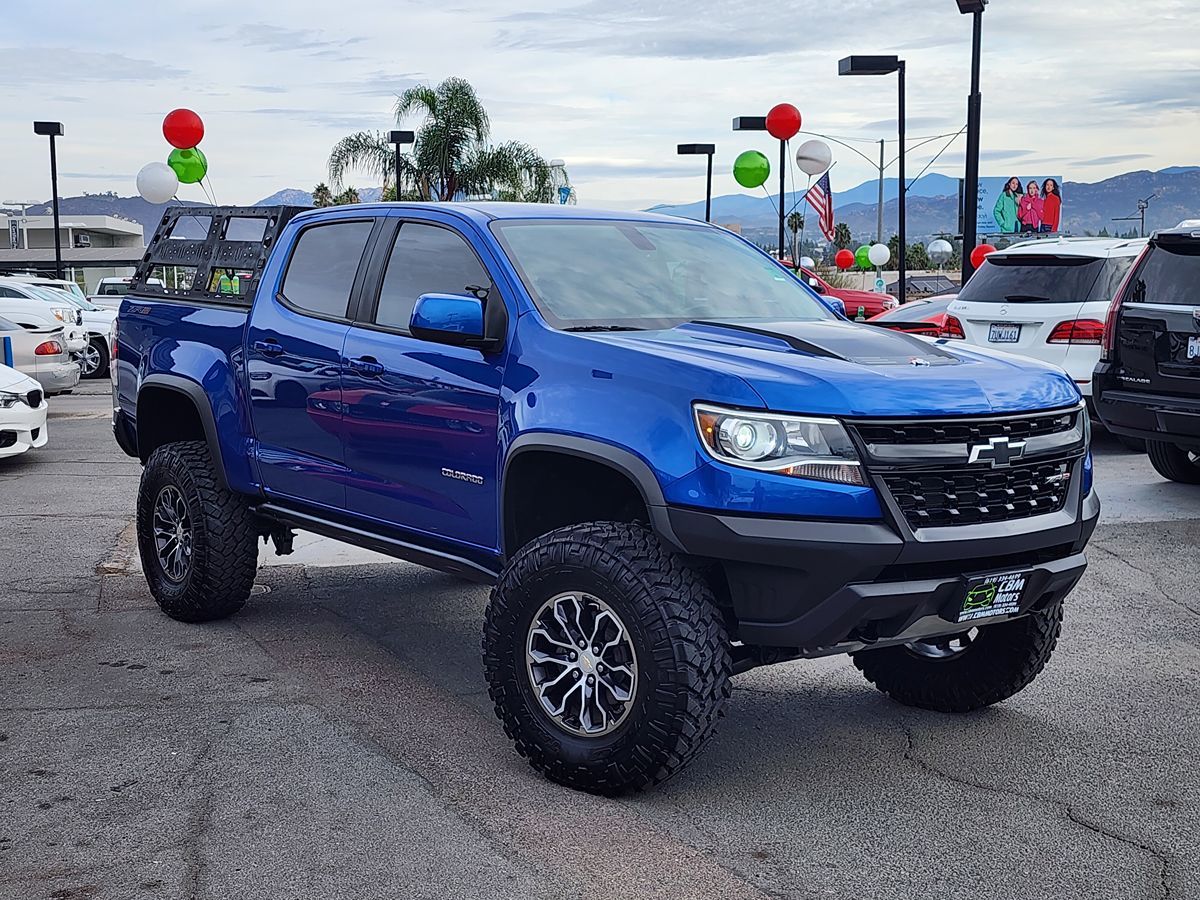
In the first quarter of 2019, Chevrolet sold 33,494 units of the Colorado, marking a 16 percent increase compared to the previous year. This impressive sales growth is a strong start for the year.
However, as I tested the truck, a significant question that remained on my mind was its safety. While safety is often overlooked when testing high-performance vehicles, it is a crucial factor for any consumer purchasing a new car or truck.
Senior editor Nelson Ireson had previously tested the more rugged, AEV-modified Colorado ZR2 Bison in the challenging, boulder-filled terrain of Arizona.
This test demonstrated the ZR2 Bison’s impressive off-road capabilities, thanks to features like Multimatic’s advanced spool-valve dampers, allowing it to crawl over boulders, navigate muddy ground, and handle snowy terrain with ease.
But for those planning to invest in a ZR2, especially those who intend to fully utilize its off-road potential, safety should be a major consideration.
A few weeks ago, a 2019 Colorado ZR2 crew cab joined our fleet just in time for me to use it for some home renovation tasks. The ZR2 arrived in a striking Kinetic Blue Metallic paint ($395) and was equipped with the 2.8-liter Duramax four-cylinder diesel engine ($3,500), with no additional options.
At an as-tested price of $47,890, whether that’s fair value is subjective, but given the ZR2’s impressive off-road capabilities, I’m inclined to say it is a reasonable price. There’s no denying the truck’s strong presence on the road.
The ZR2 package includes several performance-enhancing features such as locking front and rear differentials, a reinforced rear axle, upgraded front control arms, and extensive underbody protection.
It also comes equipped with aggressive 31-inch Goodyear Wrangler Duratrac tires. Despite these rugged features, you might expect the ZR2 to be too rough for everyday driving, but that’s not the case.
1. 2019 Toyota Tundra 4WD
The 2019 Toyota Tundra, with a starting price range of $34,720 to $50,680, is an excellent option for buyers looking for a full-size pickup that excels in power, capability, and comfort.
Equipped with two powerful V8 engine options, the Tundra offers impressive towing capacity, making it a reliable workhorse.
At the same time, it ensures a refined driving experience with its upscale interior features, which enhance comfort for both drivers and passengers on the road. This combination of strength and comfort makes the Tundra a standout choice in the full-size pickup segment.
One of the Tundra’s standout qualities is its thoughtfully designed cabin, which includes generous storage options, easy accessibility to the rear seats, and best-in-class legroom.
These features contribute to a spacious and user-friendly interior environment. When placed alongside competitors like the Ford F-150 and GMC Sierra 1500, the Toyota Tundra holds its own as a formidable contender in the competitive full-size pickup segment.
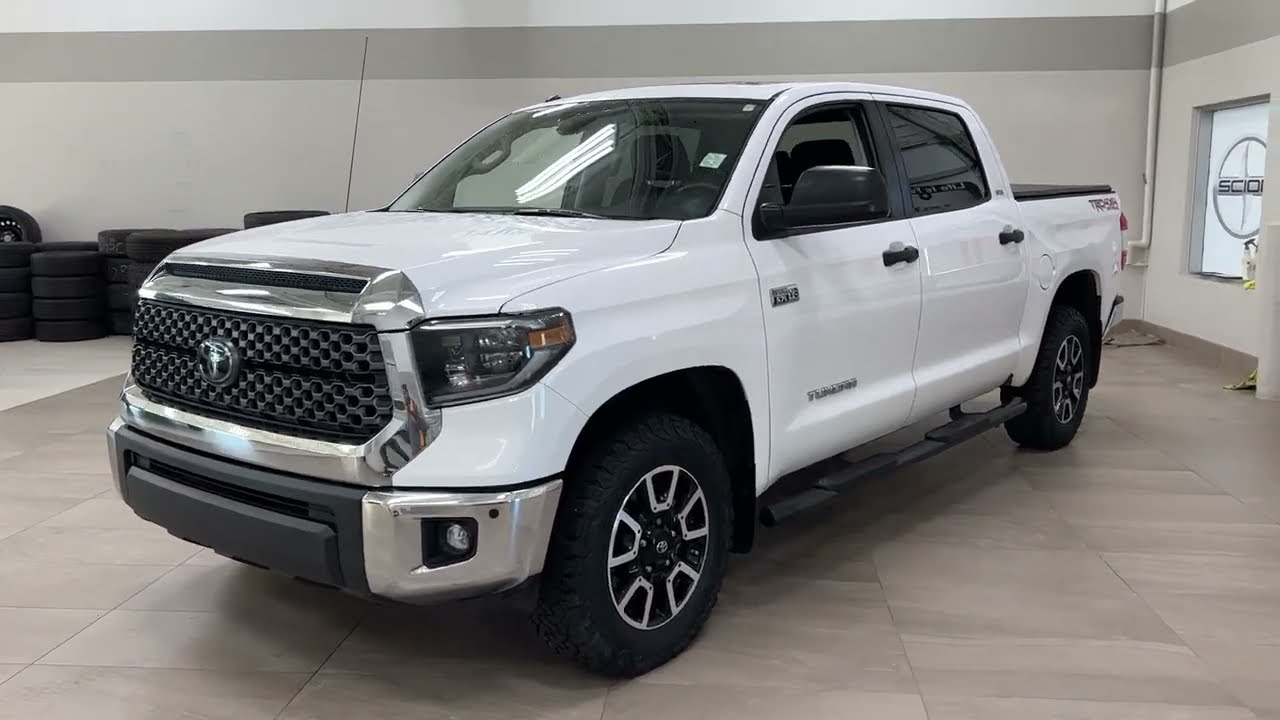
The 2019 Toyota Tundra TRD Pro stands out with its Fox shocks, offering what may be the best ride among full-size pickup trucks. However, it comes with a hefty price tag and some oddly configured features.
The Tundra is available in multiple trims, including the 1794 Edition CrewMax 5.5′ Bed 5.7L, Limited CrewMax 5.5′ Bed 5.7L, and Limited Double Cab 6.5′ Bed 5.7L, all offering the same fuel economy of 13 city / 18 highway MPG.
The starting prices vary with the 1794 Edition at $47,630, the Limited CrewMax at $42,800, and the Limited Double Cab at $40,935. While the 2019 Toyota Tundra has several appealing qualities, it’s an aging truck in need of a redesign.
Toyota has been slow to update the Tundra, and although it retains a loyal following, its outdated design and thirsty V-8 engines make it less competitive against newer trucks from other manufacturers. In terms of overall rating, we give the 2019 Tundra a score of 5.0 out of 10 points.
The Tundra mostly carries over from the previous year, with some significant upgrades to the premium TRD Pro trim. The truck is available in several trims, including SR, SR5, Limited, 1794 Edition, Platinum, and TRD Sport.
Notably, Toyota hasn’t redesigned the Tundra since 2007, although it did receive a substantial update in 2014, which still influences its current design.
Under the hood, every Tundra is equipped with a V-8 engine. The standard engine on the SR and SR5 trims is a 4.6-liter V-8 producing 310 horsepower, while the more powerful 5.7-liter V-8, delivering 381 horsepower, is more common.
Both engines are paired with a 6-speed automatic transmission that sends power to either the rear wheels or all four wheels, though there is no full-time four-wheel-drive system available.
The Tundra offers smooth steering and a comfortable ride but lacks agility. Over the years, it has become a quiet and refined highway cruiser.
The TRD Pro trim, in particular, benefits from new Fox shocks that absorb bumps efficiently both on and off the road. Inside, the Tundra offers ample space, especially in the crew-cab configuration.
However, it is also filled with low-quality plastics that seem out of place given the truck’s high price. While most Tundras come equipped with a large touchscreen for infotainment, the lack of Apple CarPlay and Android Auto is a frustrating oversight.

